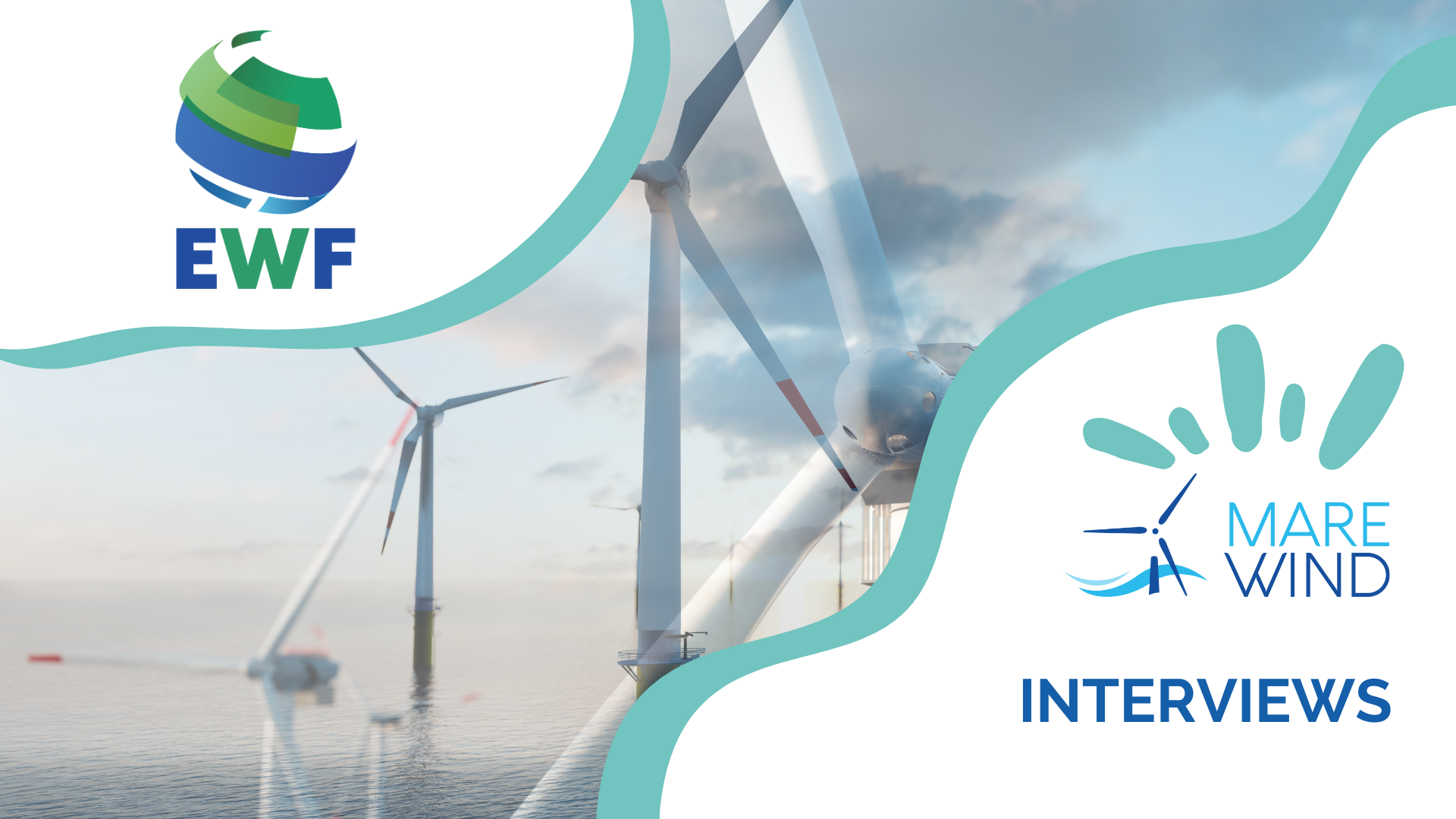EWF, driving standardisation to ensure seamless integration of the MAREWIND innovations
01 July 2024
Why did you join the MAREWIND project and what’s your role?
The European Welding Federation (EWF) joined the MAREWIND project because it aligns perfectly with our strategic objectives, particularly in the maritime sector, which is a key focus area for us. Our primary role within the MAREWIND project is to contribute to the standardisation activities. This involvement is crucial, as it ensures that the innovations and advancements developed through the project meet rigorous industry standards and can be seamlessly integrated across the maritime sector.
What specific methods or strategies will be employed to ensure that the standards and regulations mapped are effectively integrated into the project’s outcomes?
To ensure that the standards and regulations are effectively integrated into the MAREWIND project’s outcomes, we have adopted a meticulous and comprehensive approach. The first step involved developing a standardisation activities strategy and roadmap.
Initially, all partners contributed to identifying relevant standardisation documents, bodies, and technical committees. As the project progressed, we focused on applying these documents and pinpointing gaps between the existing standards and the project’s technological developments.
Currently, we are actively engaging with standardisation bodies to report our findings and coordinate the next steps. This ongoing interaction ensures that our project’s innovations are aligned with industry standards and can be widely adopted.
How will the consortium integrate the focus on EU standardisation and regulation to support the achievement of the MAREWIND project?
The consortium’s integration of EU standardisation and regulation is pivotal to the success of the MAREWIND project. The EU’s emphasis on standardisation and regulation within research and development projects is a commendable initiative. It serves as a bridge, promoting the transition of groundbreaking technological advancements from the project phase to industry-wide application.
By adhering to these standards and regulations, we ensure that our innovations are not only cutting-edge but also compliant with the highest industry benchmarks. This alignment facilitates the seamless incorporation of new technologies into standardisation documents, ultimately driving industry progress and adoption.
Can you elaborate on the planned stages and phases for standardisation activities within the project, and how these activities will be coordinated with the work carried out under the various WPs?
The standardisation activities within the MAREWIND project are meticulously planned and executed in several stages to ensure thorough integration and coordination with the various work packages (WPs). The provided schematic illustrates this detailed roadmap.
- Standards Mapping Report: This initial phase involves creating a comprehensive standards mapping report serving as a foundation by identifying existing standards, standardisation documents, relevant bodies, and technical committees that align with the expected project outputs.
- First Standardisation Search Methodology: During this phase, the focus is on expected project outputs. Partners collectively identify existing standards, those under development, and finalise relevant standards. This phase ensures that the project results are aligned with existing frameworks.
- Identification of Standardisation Gaps: As the project progresses, a detailed analysis is conducted to identify gaps between the existing standards and the technological developments from the project. This step is crucial to pinpoint areas that require new or revised standards.
- Second Standardisation Search Methodology: With a focus on the results, this phase further refines the search methodology to ensure that all relevant standards are identified, considering the technological advancements achieved.
- Standardisation Bodies Engagement: This ongoing process involves active interaction with standardisation bodies to report findings, articulate the gaps, and coordinate the next steps. Key questions addressed include which bodies to engage with, how to approach them, and the appropriate timing for engagement.
- Recommendation Document: The final phase involves drafting and submitting a recommendation document. This document compiles all findings and recommendations and is submitted to relevant working groups within CEN (European Committee for Standardisation) and ISO (International Organisation for Standardisation).
By following this structured roadmap, the MAREWIND project ensures that its innovative outputs are seamlessly integrated into industry standards, thereby promoting broader adoption and compliance across the maritime sector.
How do you see the future of the MAREWIND project?
We see a bright and promising future for the MAREWIND project. With its innovative approaches and cutting-edge technologies, the project holds great potential for transformative applications in the offshore and maritime +sectors. By addressing key challenges and advancing state-of-the-art solutions, MAREWIND is poised to significantly enhance efficiency, sustainability, and resilience within these industries.

